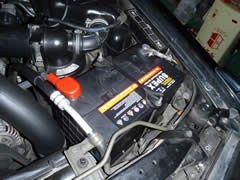How To Inspect A Used Car When I Finally Get It? - Vol.216
After deciding to save money by buying a used car, you should inspect the vehicle to make sure it is road ready. There are two main reasons for performing a full inspection immediately after purchasing a used vehicle:
- You don't know when the last time a general maintenance like oil changes and air filters were performed. Inspections will let you know to do this right away so that you don't end up driving the car without the necessary fluids and risk causing damage.
- Some used car dealerships offer a warranty or return policy on their stock depending on the contract that you sign. If your inspection comes up that there is something seriously wrong with the vehicle, you can return it and avoid taking on heavy repair costs.

You can either choose to perform the inspection yourself, or take the vehicle into a mechanic shop to have it professionally inspected. If you do choose to perform the inspection yourself, here is a quick guide on what you should look for to get the most comprehensive results.
1. Inspect the Tires & Suspension
Check the tread on the tires to find out whether or not they need replacing using just a single penny. Take the penny and it with Lincoln's head facing downward between one of the treads. If at least part of his head is covered up by the tired, then your tires are fine; if no part of the head is covered, you'll need to replace the tires. Also take a gauge and check the tire pressure to make sure that they are pumped up to the factory recommendations.
While you are underneath the car, look to see if the tires are leaning in or away from the vehicle. This is an indicator that there are problems with the suspension. Suspension repair or replacement can cost you anywhere from $1,000-$5,000.
2. Check Fluids
Open up the hood and located two the oil dipstick near the engine. If you can't find the stick, reference the vehicle's owner manual. Pull the dipstick out and wipe it off with the paper towel before reinserting it back into the slot for a more accurate reading. Then remove the stick one more time and check the oil level displayed on the stick as well as the coloring.
Next, head over to the coolant container and make sure that it is above the line that says 'minimum' or 'lowest.' The coolant is what runs through the engine and makes sure that the engine isn't overheating while you drive. Don't open the coolant container until the car has completely cooled down after use because pressure from steam will build up in the container when the contents are hot that could be a safety hazard.
3. Test The Battery Strength and Alternator Charge
Take your battery into a auto parts store or purchase a handheld device and determine the voltage strength. The voltage readings should be anywhere between 12.4-12.7, anything less means that you need a new battery or that the battery you currently have is not being charged.
Then attach a charge reader to the two terminals and start your vehicle. Leave the vehicle on idle and check the readings on the gauge of how many volts are being let off. The average charge when the car is on and in idle should be between 13.5-14.5 if the alternator is working properly.
4. Visually Inspect the Engine
Grab a flashlight and prop the hood open. Shine the light on the engine block and look for any signs of rust, spills from fluid leaks, or general signs of poor maintenance. Be conscious of any fowl or abnormal odors that might have been caused by leaks in the lines that could be symptoms of more serious problems.
Afterwards, close up the hood tightly and start the car. Rev the engine slightly while listening for sounds of grinding, popping, or ticking coming from the car. Enlist the help of a friend to watch the tail pipe for unusual or thick clouds of smoke. Any of these signs or sounds could be caused by engine problems that will need to be fixed.